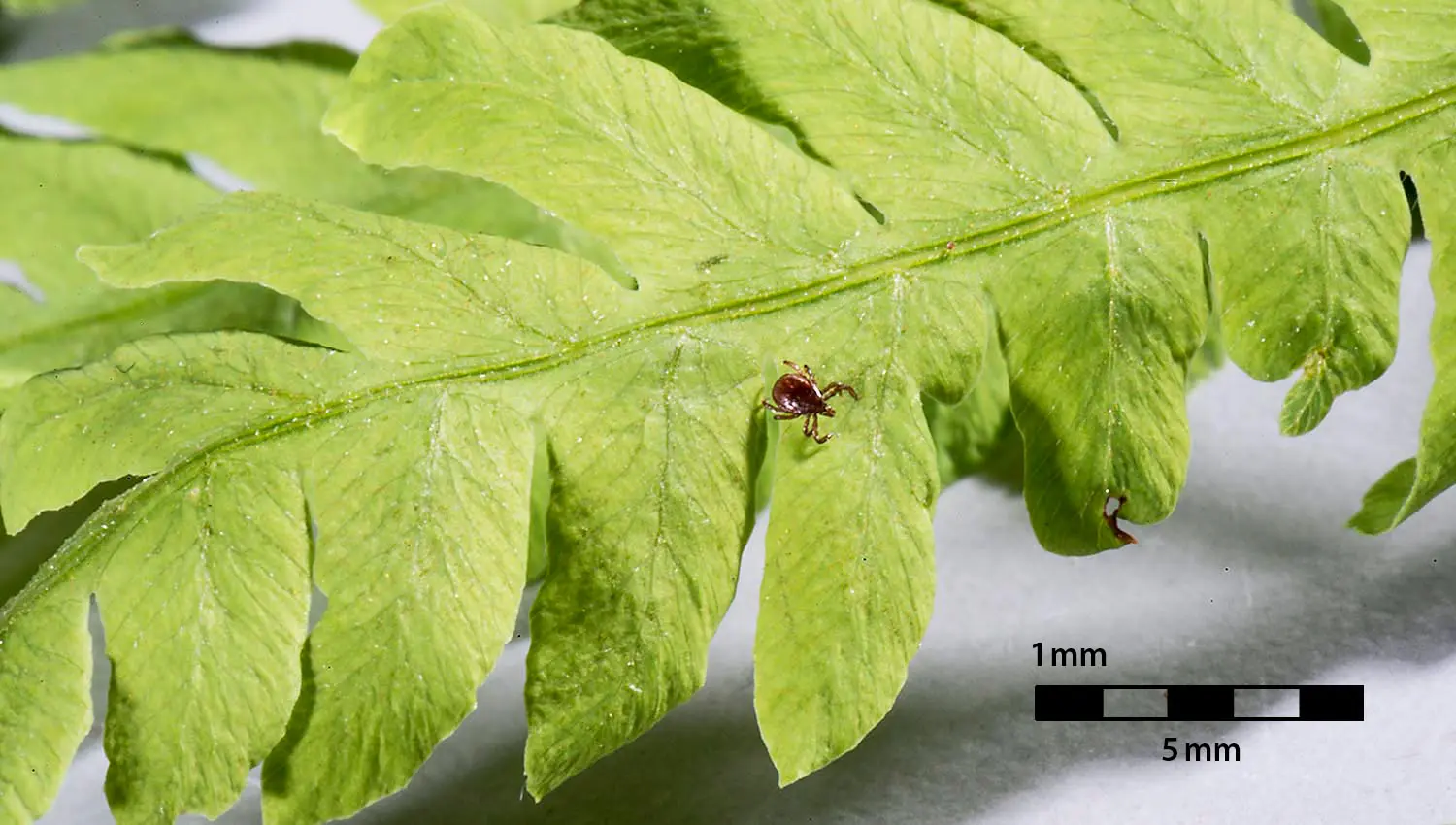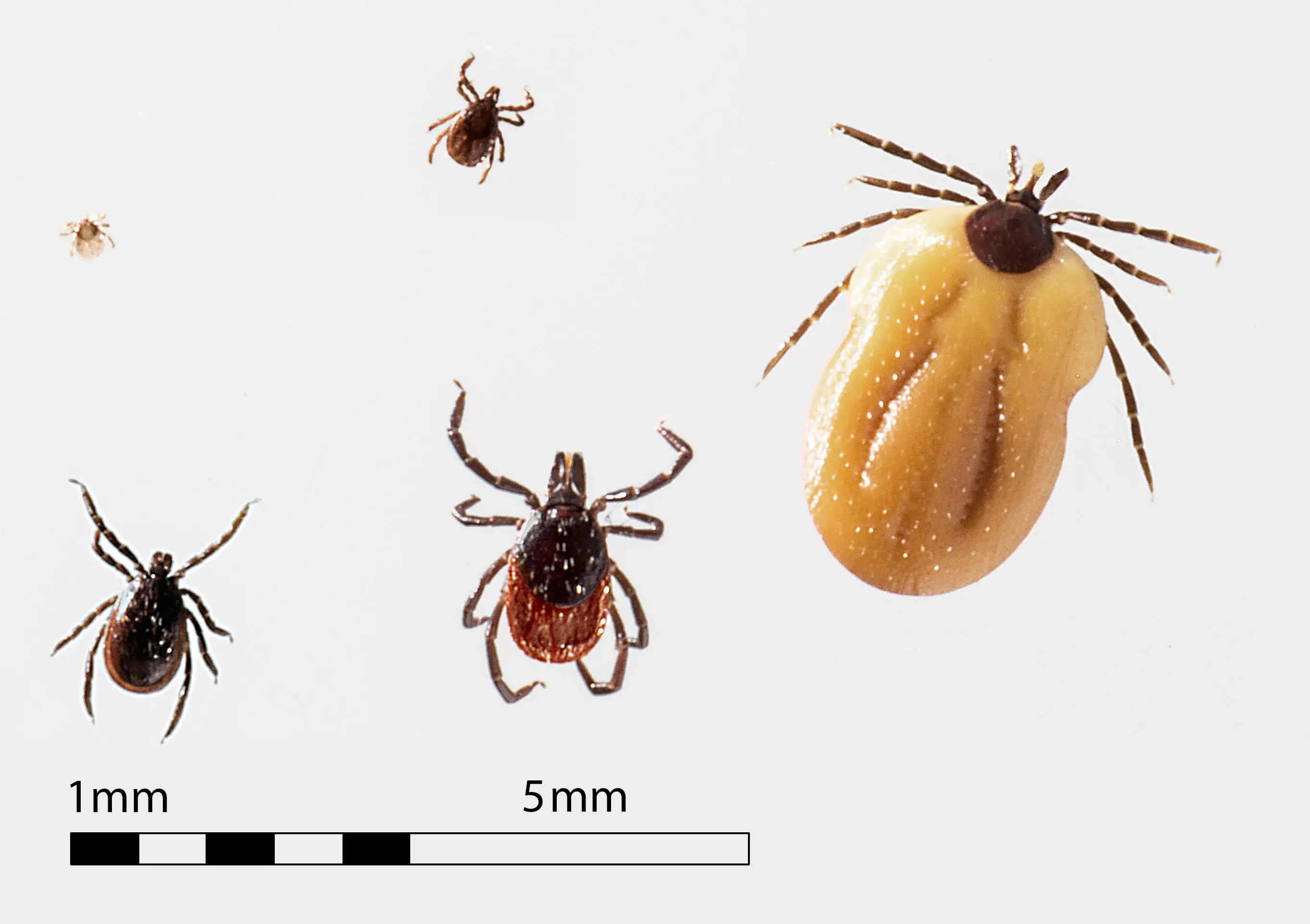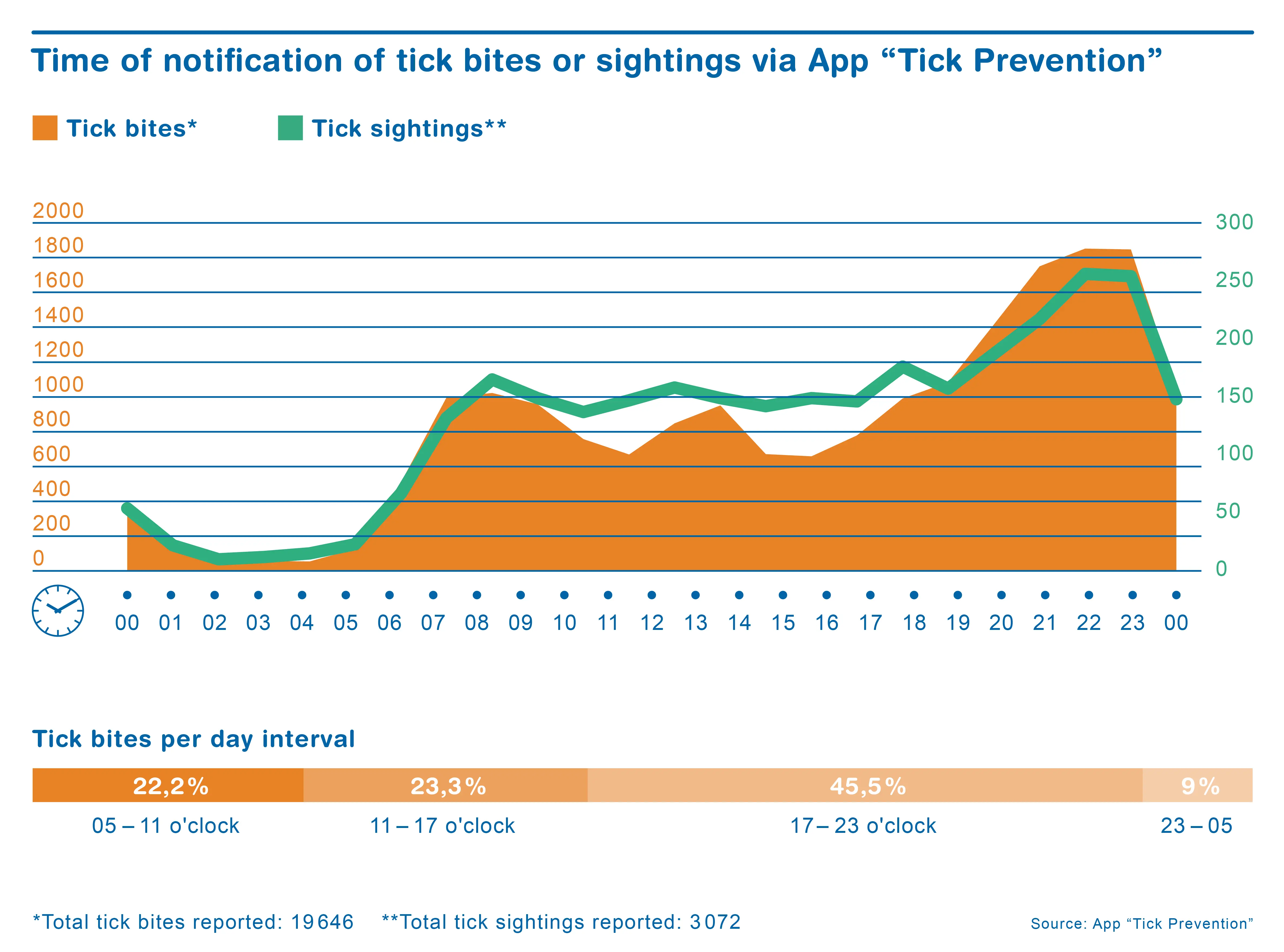Only one in four performs symptom control after tick bite
The third and final symptom control 28 days after a tick bite is performed by only 25 percent of those affected. This is shown by evaluations of log entries from the ZHAW app "Tick". The researchers who developed the app still see a lot of potential for prevention here.
Since 2015, the ZHAW app "Tick" supports those affected by a tick bite. Five days after an entry in the log, the app’s first check reminder helps to find the body part affected by the tick bite again and to compare it with a symptom description. The Lyme disease symptom picture provides a point of reference for differentiating between skin irritation or suppuration and the rash typical of a tick bite. The reminder from the app to perform a first check after five days is acted upon by 36 per cent of all app users. The third and final symptom check after 28 days is carried out by 25 per cent. These results show that there is still a lot of potential for prevention through consistent symptom control. This is positive, because regular tick checks in the evening and post-bite symptom checks provide every user with the power to influence the risk of tick-borne diseases.
Data collection mostly in the evening
Since the launch of the ZHAW "Tick" app in 2015, almost 20,000 tick bites have been recorded in the app. The current survey conducted by researchers at the ZHAW Institute for Natural Resource Sciences (IUNR) shows when the tick bites are recorded. Analysis of the data reveals that the number of tick bite reports significantly in the morning and remains at approximately the same level until 17:00. Between 17:00 and 23:00, the prevention app’s log is used particularly often, when 45.5 percent of all ticks are discovered, removed and recorded. The evening rise can be explained by showers taken after outdoor activities. The increase in the morning after 06:00 could be due to tick bites from the previous day being discovered during morning bathroom routine. The actual tick contact may have occurred hours to days earlier. The daily course of tick bites and sightings transmitted via the "Tick" app shows when the tick log is used by users of the app. The actual tick contact may have occurred hours to days earlier. Registered tick sightings are ticks moving around on pets, clothing and skin.
Utilising Data Science for Public Health
As part of the School of Life Sciences and Facility Management’s funding programme “Health Research Hub”, “Tick” app data will be analysed over the next two years and used for the development of a dynamic-spatial tick risk model. An interdisciplinary solution approach is envisaged that will apply geographical information systems, data science and artificial intelligence in addition to expertise in tick biology and prevention. Up-to-date visualisations of the tick situation and forecasts are intended to help reduce the risk of tick-borne diseases and, for example, support teachers in planning locations for forest project weeks.
Only half of all tick bites are noticed
Ticks use sophisticated means to ensure they can feed on their host’s blood undetected for several days. In order to safeguard their meal, ticks do all they can to prevent their bite being noticed by the host, animal or human. They inject a local anaesthetic and an anti-inflammatory substance into the bite. The anticoagulant thus added ensures that the saliva-blood mixture in the wound remains liquid throughout the meal. “In order to be able to identify possible symptoms of Lyme disease (Lyme borreliosis), the tick must be discovered, and consistently carrying out checks helps to significantly increase the preventive effect”, explains Werner Tischhauser.
General tips for action, follow-up of a tick bite
If you are bitten, the tick should be removed quickly to prevent the transmission of Borrelia (bacteria). However, a bite does not necessitate a visit to the doctor. Such a visit only makes sense if a circular rash appears around the bite, flu-like or other suspicious symptoms occur in connection with the tick bite. Flu-like symptoms can occur not only as a result of Lyme disease, but also due to a tick-borne encephalitis (TBE) infection. Statistically, a tick bite is no cause for alarm; only three per cent of all tick bites result in Lyme borreliosis and less than one per cent in a TBE infection. Whereas Borrelia are transferred from the tick to the host with a time delay of about 16 hours, TBE viruses are transmitted immediately. In contrast to the TBE vaccination, there is no such vaccination for Lyme disease. Early detection of tick bites and possible Lyme disease symptoms is therefore particularly important.


